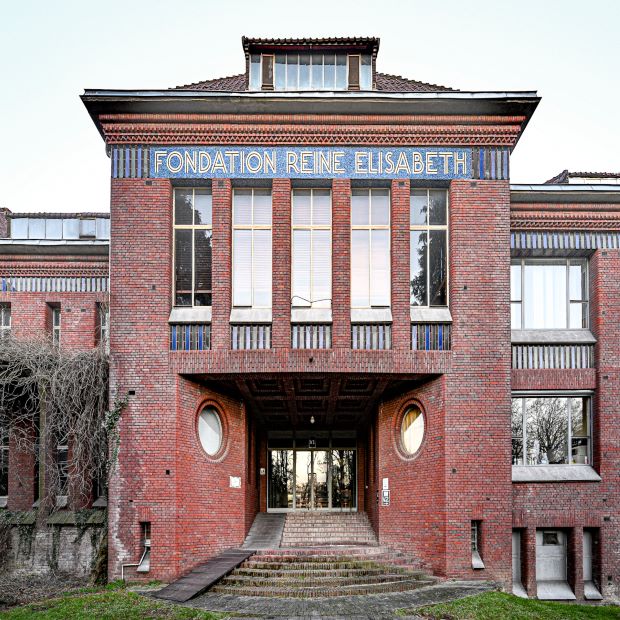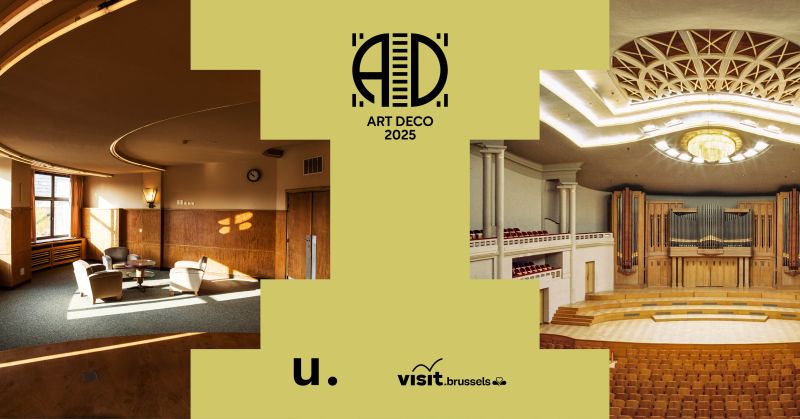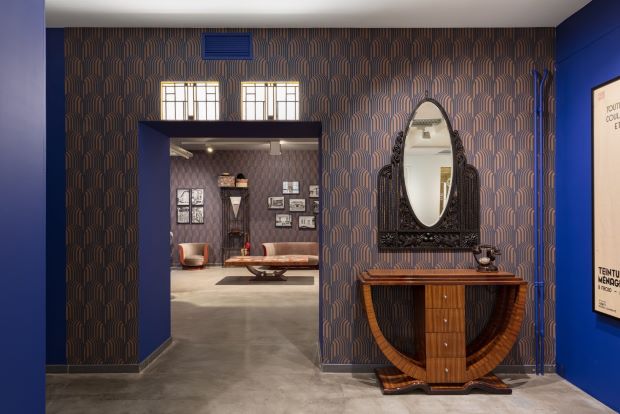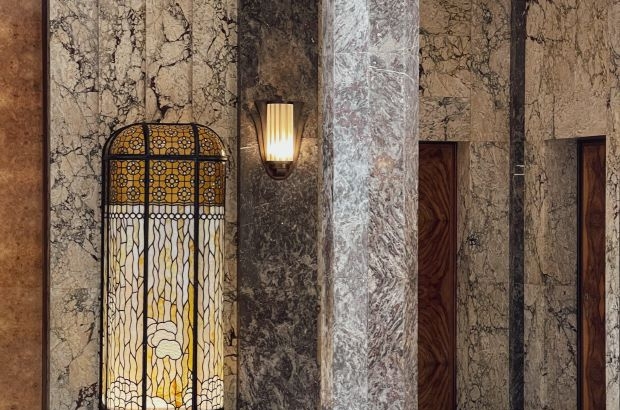- Daily & Weekly newsletters
- Buy & download The Bulletin
- Comment on our articles
Art Deco in the spotlight in 2025 as Brussels honours centenary of style movement
After celebrating the 100th anniversary of Art Nouveau in 2023, Brussels now honours the centenary of the architecture and style movement Art Deco.
Art Deco Year 2025 aims to replicate the success of the previous edition that attracted almost 2 million visitors from home and abroad.
Organised by heritage body urban.brussels and tourism agency visit.brussels, the year-long programme is part of a wider celebration of the influential style that flourished in Europe and the US during the 1920s and 30s.

Birth of Art Deco movement
Its birth is attributed to the groundbreaking Exposition International des Arts Décoratifs et Industriels Modernes that was staged in Paris in 1925.
The landmark world expo resolutely turned its back on war and economic hardship and looked optimistically to the future. Its strict design criteria for pavilions – nothing could be based on historical styles – led to a range of contemporary architectural creativity, including Russian Constructivism and Dutch Expressionism.
For Belgium’s pavilion, pioneering Art Nouveau architect Victor Horta eschewed his famous curved style in favour of a stepped, rectilinear structure that was stylistically similar to the expo’s numerous French pavilions.
It was these ‘art moderne’ creations by French businesses and decorative artists that would have an immediate influence on design sensibilities around the world. The six-month fair also established Paris’s reputation as the world’s fashion and style capital.
Despite its apparent modernity, Art Deco was an evolution of turn-of the-century Art Nouveau, while following principles of rational and scientific engineering. Functionality was peppered with artistic touches. Motifs and symbols of modernity served as decorative statements: geometric patterns and metallic accents such as sunbursts and stepped forms.
Remarkable Art Deco sites in Brussels

The movement’s aesthetic flourishes extended to furniture, as well as the decorative arts – including jewellery and glassware – as well as adorning facades from the period.
Among Brussels’ outstanding Art Deco buildings are its flagship arts centres (pictured above): Bozar (built 1922-29) and Flagey (built 1935-38), as well as the Villa Empain, Palais Stoclet, Kaaitheater and the Van Buuren house and gardens. The imposing Koekelberg basilica to the north of the city is another emblematic period building, along with numerous public structures.

Exhibitions, talks, events and the opening of buildings are all scheduled for the year ahead, according to the region’s state secretary of urban development and heritage Ans Persoons. Together, they will raise awareness of the history of Art Deco, "an artistic movement resolutely turned towards modernity", she said.
Programme highlights
Many existing cultural activities will honour the style movement, including the ninth edition of the BANAD Festival this spring. Spread over three weekends between15 and 30 March, it invites the public to explore Brussels’ neighbourhoods through the prism of the city’s rich architecture.
Organised by Explore.Brussels, the festival proposes a multifaceted programme with interior visits of around 60 sites - some accessible for the first time - plus thematic guided tours on foot or by bike, talks, inclusive and family activities and its renowned antique and restoration fair.

Already on show is Villa Empain’s exhibition Echoes of Art Deco (until 25 May; pictured)). Not only does it feature geometric patterns, beautiful stained glass and stylish buildings, the show recounts ‘Art Deco’ life through originally decorated and furnished rooms complete with ‘roaring’ 1920s flapper dresses, gramophones and books.
Urban action group ARAU is offering an extensive programme of visits of Art Deco sites this year. The organisation is committed to preserving Brussels’ architectural heritage and runs guided tours of some of the capital’s stylistic masterpieces from the period.
Art Deco Year 2025 is curated by former Bozar director Paul Dujardin, in partnership with museums and cultural, scientific and artistic institutions in the capital.
Photos: (main image) Villa Empain-Fondation Boghossian Echoes of Art Deco ©Laetitia van Hagendoren; Fondation Medicale Reine Elisabeth ©EB Endre Sebok; Synagogue de la Communaute Israelite orthodoxe de Bruxelles ©Endre Sebok; Fondation Boghossian Echoes of Art Deco ©Silvia Cappellari



















